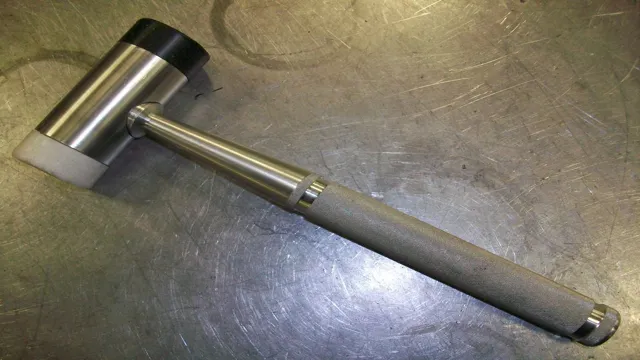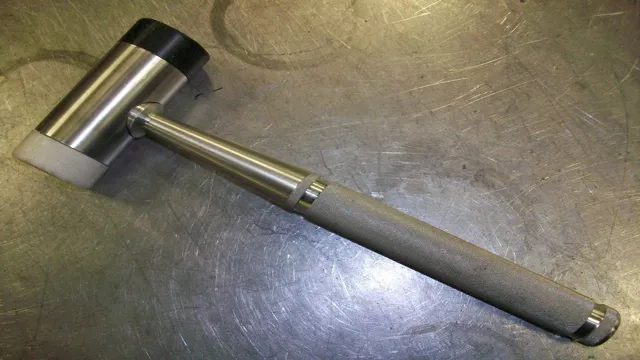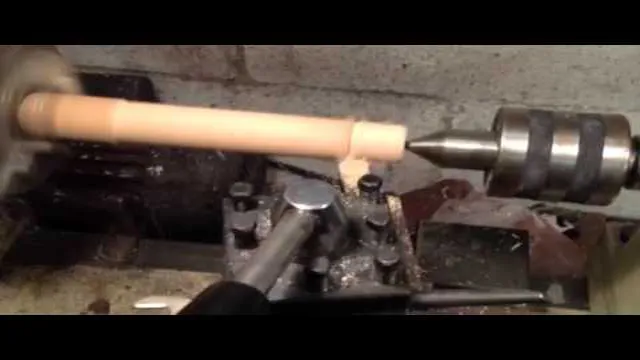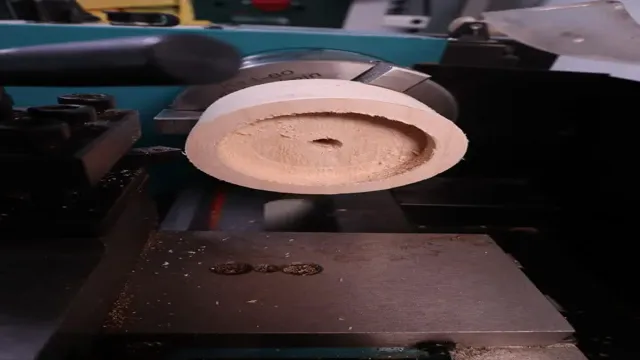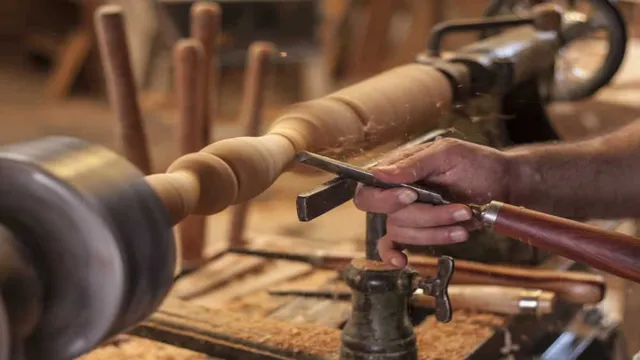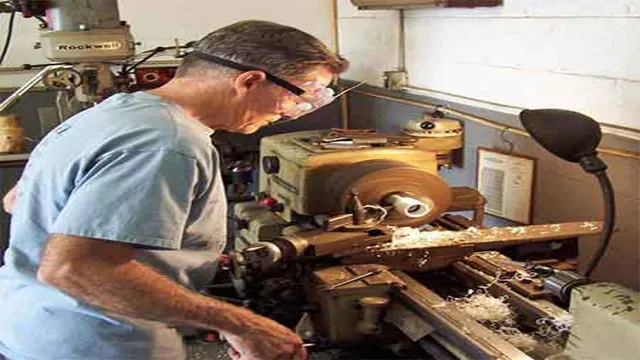How to Turn on a Metal Lathe: A Step-by-Step Guide for Beginners

Are you new to the world of metalworking and unsure of how to turn on a metal lathe? Don’t worry, you’re not alone! Many beginners find the process of starting a metal lathe intimidating, but with a little guidance, you can be up and running in no time. Think of starting a metal lathe like starting a car – you need to follow a specific sequence of steps to ensure everything runs smoothly. So buckle up, grab your safety gear, and let’s dive into the world of metal lathe operation.
In this blog post, we’ll walk you through the process step-by-step, detailing everything from safety precautions to troubleshooting common issues. By the end of this post, you’ll feel confident and ready to start creating your own metal masterpieces with your newly activated metal lathe.
Introduction
Turning on a metal lathe may seem intimidating, but it’s actually a straightforward process. First off, ensure that the lathe is grounded and plugged into an appropriate power source. Next, check that the power switch on the lathe’s control panel is turned off.
Then, turn on the power switch and listen for any unusual sounds or vibrations. If everything sounds normal, the lathe is ready to use. Finally, adjust the speed and direction of the lathe using the control panel’s settings according to your project’s specifications.
With these simple steps, you’ll be able to turn on your metal lathe and start crafting your next masterpiece!
Explanation of Metal Lathes
Metal lathes are an essential tool for any metalworker, providing a way to shape and cut metal into the desired form. A metal lathe typically works by rotating a piece of metal against a cutting tool, allowing the tool to remove material from the workpiece. This process can be used to create a wide variety of shapes and sizes, making metal lathes an invaluable tool in many industries.
One of the most significant benefits of metal lathes is their ability to produce highly detailed and precise cuts, making them a popular choice for intricate projects such as jewelry making and watch repair. Whether you’re a professional metalworker or simply someone interested in DIY projects, understanding the basics of metal lathes is a must for anyone looking to work with metal.

Safety Precautions
Safety precautions are essential to protect ourselves and others from potential harm. Whether at home or work, there are many hazards that can cause accidents. Electrical mishaps, fires, chemical spills, and falls are just a few of the risks we face on a daily basis, making it imperative to implement safety measures.
For instance, wearing appropriate protective gear, such as gloves, goggles, and hard hats, can reduce the likelihood of injury. Additionally, keeping workspaces tidy and well-organized can prevent slips, trips, and falls. Similarly, proper handling and storage of hazardous materials can minimize the risk of explosions or fires.
Therefore, it is crucial to adhere to all safety protocols to ensure a safe and secure environment for everyone. Remember, a little caution can go a long way in preventing accidents!
Turning On the Metal Lathe
If you’re new to metalworking, turning on a metal lathe might seem a bit intimidating at first. But don’t worry, with a little practice, it becomes second nature. Firstly, make sure you have all the required safety gear such as goggles and gloves.
Next, ensure that there are no obstructions around the lathe and that the power switch is in the off position. Place the material you want to work on between the lathe’s center points while ensuring that it is properly secured. Now, turn on the lathe by pushing the power switch to the “on” position.
Adjust the speed to the appropriate level, and you’re ready to start cutting! Remember to keep your fingers and clothing away from the cutting tools and always use caution when operating a metal lathe. By following these basic steps, you’ll be able to turn on a metal lathe safely and start creating precise metalwork.
Locating the Switches and Knobs
When you’re ready to start using your metal lathe, the first step is to locate the switches and knobs that control the machine’s power. First, locate the main on/off switch, which is often located on the front or side of the machine. Once you’ve found this switch, turn it on and the machine should start humming to life.
If you’re unsure about which switches to use, consult your machine’s manual or ask an experienced user for help. It’s important to never skip this step or attempt to bypass any safety measures in order to get started more quickly. Running the machine without properly turning it on could result in damage to the equipment or serious injury.
With the power switch engaged, you’re ready to start exploring the other knobs and settings on your machine to begin honing your metalworking skills.
Turning On the Power
When it comes to turning on a metal lathe, safety always comes first. Make sure to wear the proper protective gear, such as safety glasses and gloves, before proceeding. Once you are geared up, turn on the power to the lathe.
This is usually done by switching on the power supply or turning a key. Before starting any work on the lathe, make sure that all the equipment is properly lubricated and in good condition. The sound of a smooth-running lathe is music to the ears of any machinist.
The lathe can be a powerful machine, so always be aware of your surroundings and use caution when operating it. Once you feel confident and ready to start, it’s time to begin creating precise and intricate metal pieces. Don’t be discouraged if it takes some time to get used to the machine, as with practice and patience you’ll soon be able to turn out beautiful and functional pieces effortlessly.
Adjusting the Speed and Feed Rate
Adjusting the speed and feed rate is essential when operating a metal lathe to ensure that you’re achieving the best possible results. Once you’ve turned on the machine, it’s important to check if it’s running at the correct speed. Most metal lathes come with speed settings that you can adjust depending on the material you’re working on.
Keeping the speed too high or too low can result in an uneven finish or can cause damage to the material. Similarly, feed rates determine how fast the cutting tool moves across the surface of the material, with faster feed rates requiring lower cutting depths and slower feed rates needing higher cutting depths. As a rule of thumb, implementing the correct feed rate is needed in order to control the chip thickness and reduce tool wear.
It may take some trial and error to find the perfect speed and feed rate, but once you do, you’ll get efficient and high-quality results. So, take your time in analyzing your machine and determining the best settings to use for your project.
Conclusion
So, there you have it – turning on a metal lathe doesn’t have to be a daunting task. With a few simple steps, a bit of attention to detail, and a healthy regard for safety, you can get your lathe spinning in no time. And who knows – with some practice and a little creativity, you might just discover the makings of your next masterpiece lurking in that hunk of metal.
So, go ahead and fire up that lathe – the possibilities are endless!”
Summary of Steps
If you’re looking to get started with metalworking, one of the essential skills you need to learn is how to turn on and operate a metal lathe. The first step in the process is to ensure that the lathe is correctly set up and plugged in. Next, you’ll need to turn on the power switch and make sure that the emergency stop button is disengaged.
Once the machine is powered on, you can adjust the speed and direction of the spindle using the control panel. It’s important to keep safety in mind at all times when using a metal lathe, wearing the appropriate protective gear such as gloves and goggles and making sure that the workspace is clear of any debris or hazards. With practice and patience, you’ll be on your way to mastering the art of metalworking and creating precision parts and components.
Final Safety Reminder
When it comes to operating a metal lathe, safety should always be a top priority. Before turning on the machine, it’s important to ensure that all safety features are in place, such as guards and emergency stop buttons. Additionally, it’s crucial to wear appropriate personal protective equipment, such as safety glasses and gloves.
Remember, a metal lathe can be a dangerous tool if not used correctly. Always follow the manufacturer’s instructions and guidelines for use. And if you’re unsure about anything, don’t hesitate to seek guidance from a more experienced operator.
By taking the necessary precautions and being mindful of safety, you can reduce the risk of accidents and injuries while using a metal lathe.
FAQs
What safety precautions should be taken before turning on a metal lathe?
Before turning on a metal lathe, make sure all safety guards are in place, wear appropriate clothing and accessories, such as safety glasses, closed-toe shoes, and ear protection, and ensure the workpiece is firmly secured.
How do I turn on a metal lathe?
To turn on a metal lathe, ensure the power switch is in the “off” position, then plug in the machine and turn on the power switch. Use the appropriate speed and feed rate settings for the material being machined.
What should I do if the metal lathe stalls or stops during use?
If the metal lathe stalls or stops during use, immediately turn off the power switch and unplug the machine. Check for any obstructions or issues with the workpiece, and make any necessary adjustments before restarting the machine.
How do I properly maintain a metal lathe?
Proper maintenance of a metal lathe includes regular lubrication of moving parts, cleaning and debris removal from the machine, regular inspection of belts and other wear components, and monitoring for any unusual sounds or vibrations during use.
Can I use a metal lathe for woodworking projects?
While a metal lathe is primarily designed for machining metal, it can also be used for woodworking projects with the appropriate attachments and cutting tools.
What is the maximum size workpiece that can be machined on a metal lathe?
The maximum size workpiece that can be machined on a metal lathe varies depending on the size of the lathe. Refer to the manufacturer’s specifications for maximum workpiece diameter and length.
How do I align the lathe’s cutting tool to the workpiece?
To align the lathe’s cutting tool to the workpiece, use a tool post alignment gauge or a dial indicator to ensure the tool is at the correct height, and use the lathe’s carriage or cross slide controls to position the tool at the correct distance from the workpiece.

